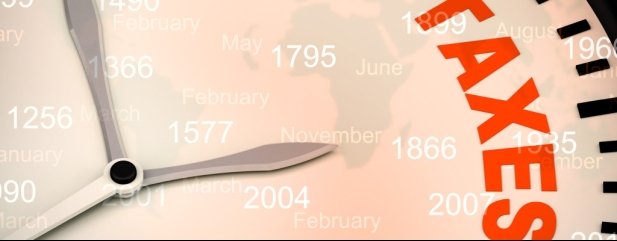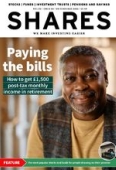Archived article
Please note that tax, investment, pension and ISA rules can change and the information and any views contained in this article may now be inaccurate.
Eight big tips to beat the taxman this April

Tax year end is less than two months away, which means it’s time to get your financial affairs in order and make sure you’re making the most of all your allowances and not unnecessarily handing over money to the taxman.
Here’s our checklist of eight things to do before 5 April to make sure your finances are in ship shape condition.
Step 1
Stuff your ISA and pension
Everyone gets an annual ISA allowance of £20,000 so make sure you’re maximising this as much as possible, as if you don’t use it, you lose it – you can’t carry forward any unused allowances to future years.
An ISA protects your investments from capital gains, dividend and income tax, so it’s the best place for your investments. Investors with spare money they plan to save and any unused ISA allowance for this year should consider using it before the 5 April deadline.
On top of that most people can put up to £40,000 in their pension each year, so work out if you want to top-up your contributions this year and do it before the end of the tax year. This limit isn’t as immediate, as you can carry forward an unused allowances for up to three years, but it’s still worth considering. Just be aware, anyone with a very high income or who has already started to take taxable income from their pension will have a restricted annual pension limit.
Step 2
Use your capital gains tax allowance
Any investment gains held outside an ISA or pension will be subject to capital gains tax. Investors can make investment gains of up to £12,300 in the current tax year before they have to pay any tax. Gains over that amount are added to income and if they fall in the basic-rate tax band are taxed at 10% and if they fall in the higher-rate tax band are taxed at 20% (an additional 8% is added to the tax rate if the gains are from a second property).
On top of that, the tax free allowance is being slashed from April, meaning that everyone can only make £6,000 of gains before they have to pay tax on them. It means it’s doubly important to consider whether it’s worth cashing in some gains this year, up to the annual limit, so you don’t have to pay tax on them in future years.
You can use something called ‘Bed and ISA’ to realise gains and then funnel investments into an ISA and protect them from tax. You need to check you’ve got some of your £20,000 ISA allowance left, and then use your investment platform’s Bed and ISA service, which means the investment outside of the ISA is sold, the proceeds moved into an ISA and used immediately to purchase the same investment within the ISA. Just make sure that you state that you only want to sell enough to realise £12,300 of gains this tax year.
Step 3
Protect your income investments from the tax grab
From April the amount you can earn before you pay dividend tax is also being slashed, from the current £2,000 a year to £1,000. It means lots of people will pay dividend tax where they haven’t before.
This means that it’s more beneficial than ever to put your income-producing investments inside an ISA, to protect them from tax. You can use the Bed and ISA process to move assets into an ISA, but if you have too many investments to move them all in one tax year you should prioritise the ones paying the highest amount of dividends.
Step 4
Claim your free Government money
Everyone loves free money. Whether it’s tax relief on your pension, the bonus on your Lifetime ISA or ensuring you claim tax breaks that you eligible for, it’s important to get as much free Government cash as you’re entitled to.
Pensions benefit from tax relief at 20% for basic-rate taxpayers, but higher and additional rate payers can reclaim an additional 20% or 25% tax relief respectively through their tax return. That means for a basic-rate taxpayer every £1 in your pension only costs you 80p and for a higher-rate taxpayer every £1 in your pension only costs you 60p.
Anyone using a Lifetime ISA can also get up to £1,000 of free money from the Government each tax year, if you put in the maximum £4,000 contribution. So, if you have some spare cash you were planning to put into your Lifetime ISA, do it before the tax year end and claim that free cash. Just be aware that you can withdraw Lifetime ISA money once you’ve reached age 60 or earlier to buy your first property, but if you take the money out for any other reason (apart from severe ill health) you’ll pay an exit penalty of 25%.
You should also check that you’re claiming any Government tax-breaks that you’re eligible for, such as the marriage allowance or claiming tax-free childcare, which gives a 20% top-up to money you use for childcare.
Step 5
Automate your investing
The end of the tax year is a good time to look back and see how you invested across the year. Were you pretty sporadic and put money in your account in fits and bursts, as you remembered, or were you very methodical. If you sit in the former camp it might be a good idea to set up regular investing. This takes the hassle out of remembering to contribute to your account each month – you’ll automatically deposit money from you bank account into your ISA and then that will automatically be invested in your chosen investment – magic.
Many investment platforms will allow you to start from as little as £25 or £50 a month. You can always pause it one month if you need to skip a month, but it means you don’t have to actively log in and invest money every month.
Step 6
Work out your inflation battleplan
Cash savings rates have risen dramatically this year, but so has inflation. It means that even with higher returns on cash, inflation is eroding a lot of your cash’s value. Everyone needs cash, for easy-access, for their emergency pot or for short-term spending. But if you have too much you could end up being recklessly conservative – and miss out on potentially larger returns from investing.
So, work out what you need in the next five years or as an emergency pot, and see how that stacks up against the amount you’ve got in cash. If you’ve got more than that set aside, think about investing it to generate a potentially higher return.
Step 7
Don’t forget the kids
Lots of parents intend to set up savings accounts for their children and then never get around to it. But if you want to put money into an ISA for them you should use up some of their ISA allowance for this year before you lose it. You can now put up to £9,000 a year into an ISA for each child – very generous. They won’t be able to access the money until they are 18, at which point it automatically turns into a normal ISA and transfers into their name, giving them full access.
Another option is opening a Junior SIPP for your child (or grandchild). You can pay in up to £2,880 each year, with Government tax relief automatically boosting that to £3,600. Your child won’t be able to access the money until they are at least age 57, maybe later if the Government increases the age limit, so it’s a very long-term play.
Step 8
Avoid a tax trap
The UK tax system is far from simple and it means it’s very easy to slip up and end up paying more tax than you need. Anyone hitting £100,000 of income starts to lose their tax-free personal allowance, at a rate of £1 for every £2 they earn over the threshold. This means that you end up paying an effective tax rate of 60% on this income – very high. By funnelling money into pensions you can bring your income back down below this level and not be hit by the higher tax.
There are lots of other examples: the threshold for child benefit at £50,000, losing your tax-free childcare at £100,000, seeing your Personal Savings Allowance slashed in half if you become a higher-rate taxpayer, to name a few. Take a look at your earnings this tax year and see if making a little pension contribution could stop you slipping into a tax trap.
Important information:
These articles are provided by Shares magazine which is published by AJ Bell Media, a part of AJ Bell. Shares is not written by AJ Bell.
Shares is provided for your general information and use and is not a personal recommendation to invest. It is not intended to be relied upon by you in making or not making any investment decisions. The investments referred to in these articles will not be suitable for all investors. If in doubt please seek appropriate independent financial advice.
Investors acting on the information in these articles do so at their own risk and AJ Bell Media and its staff do not accept liability for losses suffered by investors as a result of their investment decisions.

 magazine
magazine








